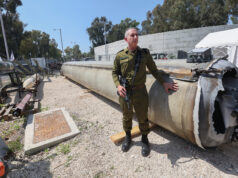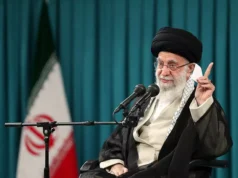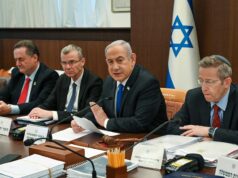From the Egyptian border breach to indiscriminate rocket fire at Israel, the Gaza Strip currently poses serious threats to regional security. The Hamas terrorist organization controls this territory because it defeated the Palestinian Liberation Organization (PLO) in a six-day Palestinian civil war in June 2007. But a cursory review of history shows that the Hamas-PLO rivalry has been brewing since 1988, when Hamas first emerged on the scene. Despite clear signs of impending conflict, nearly every professor of Middle Eastern studies in America failed to see it coming.
Why did so few experts write about the internecine Palestinian war? Hundreds of Arabic-speaking professors and researchers have trekked through the West Bank and Gaza over the years, funded by U.S. research dollars.
Most were too busy lambasting Israel’s defense policies to identify the gathering storm, but a few U.S. professors saw the writing on the wall:
Mahmood Monshipouri, a professor at Alma College in Michigan, published a prescient 1996 article in Middle East Policy entitled, “The PLO Rivalry with Hamas.”[1] He recognized the potential for conflict a full 11 years before the Gaza Coup of 2007.
Don Peretz at the State University of New York in Binghamton also foresaw that the splintering of Hamas and the PLO during the 1987 intifada would have lasting effects. He predicted that the two groups could only “paper over their differences temporarily,” and hence, “internecine conflict will very likely erupt among them when the time comes for the Palestinians to determine their political future.”[2]
But Monshipouri and Peretz were the exceptions during the 1990s.Virtually all of their colleagues lavished praise on Palestinian “civil society” as the cornerstone of a budding democracy, or skewered Israel for cracking down on the suicide-bombing terrorist groups that killed scores of Israeli civilians. After the outbreak of a new campaign of Palestinian violence, commonly termed the “intifada” of 2000, academics shifted their focus to an Israeli self-defense tactic they grossly mischaracterized as “apartheid,” with a particular focus on Israel’s security barriers around the West Bank and Gaza Strip that prevented nearly 100 percent of attempted Palestinian suicide bombings and other acts of Palestinian violence.
Over the past seven years, the Middle Eastern Studies Association (MESA)-the academic umbrella group to which nearly every American professor in the field belongs-has remained focused on these tired topics, but has failed to produce a single paper that broke ground on the internal Palestinian discord and the civil war in the making.
As media outlets in the region began to openly report on the Hamas-PLO clashes in 2003 and 2004, only a few professors chose to note it. Fawaz Gerges of Sarah Lawrence College, often criticized for his Islamist apologia, noted in the Washington Post that, “a danger exists that the further radicalization of Hamas will not only mean an escalation of violence between Israelis and Palestinians but also the risk of intra-Palestinian civil war.”
This dose of reality was the exception, not the rule. Rashid Khalidi and Joseph Massad, two Palestinian professors at Columbia University, neglected to warn of the coming Palestinian storm. If they sensed an internecine Palestinian conflict approaching, they neglected to warn U.S. policy makers. Instead, they produced a stream of tired anti-Israel diatribes. Their colleagues at other institutions, who produced almost no critical work regarding the internal Palestinian dynamic, provide additional examples of analytical failure and anti-Israel bias in this failing field.
What the professors did not grasp then, and refuse to grasp now, is that the radical Islamic ideology of Hamas, and the Palestinian nationalist ideology of the PLO, are both expansionist, violent, and based more upon the destruction of Israel than the creation of a viable Palestinian state. As such, it was only a matter of time before they clashed.
The Palestinian civil war and the subsequent Hamas coup has resulted in the launching of more than 800 rockets against Israel, a border crisis in Egypt, the death of more than 330 Palestinians in internecine fighting, and regional tensions that may soon lead to a new Middle East war. The professors in this field have yet to explain how they almost unanimously missed this critical development in the region, despite the mountains of work produced on the Palestinian-Israeli conflict. A proper reckoning of this grievous oversight will be one of the necessary steps required if Middle Eastern studies professors are ever to regain the trust of policymakers inside the Beltway and beyond.
Jonathan Schanzer, an adjunct scholar at http://www.campus-watch.org/, is director of policy for the Jewish Policy Center, and editor of inFOCUS Quarterly.
[1] Mahmood Monshipouri, “The PLO Rivalry with Hamas: The Challenge of Peace, Democratization and Islamic Radicalism.” Middle East Policy, Vol.4, No. 3,1996, pp.84-105.
[2] Don Peretz, Intifada: The Palestinian Uprising (Boulder, CO.: Westview Press, 1990), pp. 100-101.





